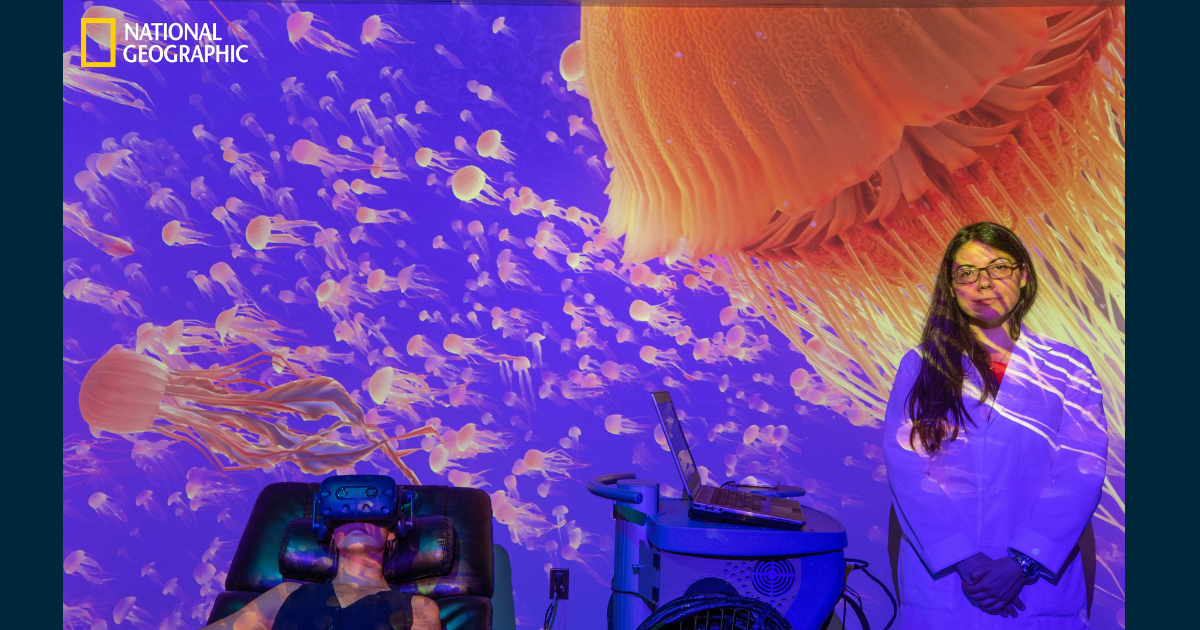
Fostering discussion and collaboration that speeds up the acquisition of new knowledge and its translation into novel pain treatments.
PRF News
Papers Of The Week
Sex-chromosome complement and Activin-A shape the therapeutic potential of TNFR2 activation in a model of MS and CNP.
Targeting C1q prevents microglia-mediated synaptic removal in neuropathic pain.
Activation of spinal microglia following peripheral nerve injury is a central component of neuropathic pain pathology. While the contributions of microglia-mediated immune and neurotrophic signalling have been well-characterized, the phagocytic and synaptic pruning roles of microglia in neuropathic pain remain less understood. Here, we show that peripheral nerve injury induces microglial engulfment of dorsal horn synapses, leading to a preferential loss of inhibitory synapses and a shift in the balance between inhibitory and excitatory synapse density. This synapse removal is dependent on the microglial complement-mediated synapse pruning pathway, as mice deficient in complement C3 and C4 do not exhibit synapse elimination. Furthermore, pharmacological inhibition of the complement protein C1q prevents dorsal horn inhibitory synapse loss and attenuates neuropathic pain. Therefore, these results demonstrate that the complement pathway promotes persistent pain hypersensitivity via microglia-mediated engulfment of dorsal horn synapses in the spinal cord, revealing C1q as a therapeutic target in neuropathic pain.
Opportunities for chronic pain self-management: core psychological principles and neurobiological underpinnings.
One in five of the population lives with chronic pain. Psychological interventions for pain reveal core principles that can be used to create opportunities for chronic pain self-management in primary practice, across health-care settings, and at home. We highlight the different types of chronic pain and illustrate the psychoneurobiological mechanisms involved. We review core principles for psychological pain management, evaluate the evidence, and illustrate the underlying neurobiology involved. We provide practical advice for how to facilitate pain self-management in clinical practice. Finally, we discuss scientific caveats and practical obstacles to improvement, suggesting possible pathways to implementation.
Multi-omic integration with human dorsal root ganglia proteomics highlights TNFα signalling as a relevant sexually dimorphic pathway.
The peripheral nervous system (PNS) plays a critical role in pathological conditions, including chronic pain disorders, that manifest differently in men and women. To investigate this sexual dimorphism at the molecular level, we integrated quantitative proteomic profiling of human dorsal root ganglia (hDRG) and peripheral nerve tissue into the expanding omics framework of the PNS. Using data-independent acquisition (DIA) mass spectrometry, we characterized a comprehensive proteomic profile, validating tissue-specific differences between the hDRG and peripheral nerve. Through multi-omic analyses and in vitro functional assays, we identified sex-specific molecular differences, with TNFα signalling emerging as a key sexually dimorphic pathway with higher prominence in men. Genetic evidence from genome-wide association studies further supports the functional relevance of TNFα signalling in the periphery, while clinical trial data and meta-analyses indicate a sex-dependent response to TNFα inhibitors. Collectively, these findings underscore a functionally sexual dimorphism in the PNS, with direct implications for sensory and pain-related clinical translation.
A prolactin-targeting antibody to prevent stress-induced peripheral nociceptor sensitization and female postoperative pain.
Scheduled surgeries elicit stress in many patients. Levels of preoperative stress, anxiety, and female gender are known risk factors for increased and prolonged postoperative pain. The mechanisms by which psychological stress increases postoperative pain, especially in women, remain unknown. We hypothesized that stress amplifies postoperative pain by sensitizing dorsal root ganglion (DRG) nociceptors. Prolactin (PRL) is a female-predominant neurohormone that is controlled by estrogen and stress. PRL signals at the prolactin receptor long (PRLR-L) and short (PRLR-S) isoforms to induce gene transcription and nociception, respectively. Critically, prolactin sensitizes female, but not male, murine, Macaque and human nociceptors, revealing an evolutionarily conserved mechanism with high translational potential for human therapy. Prior restraint stress (RS) increased the magnitude and duration of incisional injury-induced postoperative pain hypersensitivity in both male and female mice. In females, RS or incisional injury downregulated PRLR-L and increased PRL-dependent nociceptor excitability. Female selective inhibition of postoperative pain hypersensitivity was produced by a) pharmacological inhibition of pituitary PRL b) overexpression of DRG PRLR-L to bias PRL signaling away from PRLR-S and c) CRISPR/Cas9 editing of PRLR isoforms. PL200,019, our recently discovered monoclonal antibody against human PRL (hPRL), prevented hPRL-induced sensitization of human female nociceptors. Using female mice genetically modified to express hPRL, rather than murine PRL, PL200,019 prevented both stress and incisional injury-induced hypersensitivity. Preemptive inhibition of stress-induced nociceptor sensitization with a monoclonal antibody to sequester PRL can improve female postoperative pain, diminish the need for postoperative opioids and decrease the risks of transition to chronic pain.
Aging and injury drive neuronal senescence in the dorsal root ganglia.
Aging negatively impacts central nervous system function; however, there is limited information about the cellular impact of aging on peripheral nervous system function. Importantly, injury to vulnerable peripheral axons of dorsal root ganglion (DRG) neurons results in somatosensory dysfunction, such as pain, at higher rates in aged individuals. Cellular senescence is common to both aging and injury and contributes to the aged pro-inflammatory environment. We discovered DRG neuron senescence in the context of aging and pain-inducing peripheral nerve injury in young (~3 months) and aged (~24 months) male and female mice. Senescent neurons were dynamic and heterogeneous in their expression of multiple senescence markers, including pro-inflammatory factor IL6. Senescence marker-expressing neurons had nociceptor-like profiles, included high-firing phenotypes and displayed increased excitability after IL6 application. Furthermore, elimination of senescent cells resulted in improvement of nociceptive behaviors in nerve-injured mice. Finally, male and female post-mortem human DRG contained senescent neurons that increased with age (~32 years old versus 65 years old). Overall, we describe a susceptibility of the peripheral nervous system to neuronal senescence-a potential targetable mechanism to treat sensory dysfunction, such as chronic pain, particularly in aged populations.
Neuropathic pain in diabetic polyneuropathy: a 5-year prospective study.
There are few prospective studies on neuropathic pain in diabetic polyneuropathy (P-DPN). We aimed to examine the development of P-DPN over time as well as factors associated with both the development of and relief from pain. In this 5-year follow-up study, we included 102 patients with at least probable DPN at baseline, according to the Toronto consensus criteria, recruited from a nationwide Danish cohort of 5514 patients with newly diagnosed type 2 diabetes between 2016 and 2018. All participants underwent detailed phenotyping of both DPN and pain, consisting of a bedside sensory examination, quantitative sensory testing (QST), skin biopsies, and nerve conduction studies at baseline and follow-up. The estimated prevalence (95% CI) of at least probable P-DPN increased from 11.5% (8.2; 14.9) at baseline to 14.8% (9.2; 20.4) at follow-up, with a median (interquartile range) diabetes duration of 11.0 (9.2, 12.2) years. Among 64 patients with baseline nonpainful DPN, 38.2% developed pain at follow-up, while 28.9% of 38 patients with baseline P-DPN did not have pain at follow-up. A higher proportion of patients with baseline dysesthesia developed pain (42.9%), compared with patients without dysesthesia (27.9%, Χ2-test for trend: P < 0.0001). Development of pain was associated with female sex, lower baseline sensitivity to warm stimuli on QST, and lower baseline sural sensory nerve action potential amplitudes. Relief from pain was associated with lower baseline body mass index and cholesterol, as well as higher sensitivity to cold, mechanical, and vibratory stimuli on QST at baseline. This detailed study identified risk factors for neuropathic pain development and cessation.
Endometriosis: A Review.
Endometriosis is a chronic, estrogen-dependent, inflammatory disease defined by endometrial-like tissue (lesions) outside the uterine lining. It affects up to 10% of women worldwide, and 9 million women in the US, during reproductive years.
EXPRESS: Expression of Tacr1 and Gpr83 by spinal projection neurons.
Anterolateral system (ALS) projection neurons underlie perception of pain, itch and skin temperature. These cells are heterogeneous, and there have therefore been many attempts to define functional populations. A recent study identified two classes of ALS neuron in mouse superficial dorsal horn (SDH) based on expression of the G protein-coupled receptors Tacr1 or Gpr83. It was reported that cells expressing these receptors formed largely non-overlapping populations, and that ~60% of ALS cells in SDH expressed Tacr1. An additional finding was that while Tacr1- and Gpr83-expressing ALS cells projected to several brain nuclei, their axons did not reach the ventral posterolateral (VPL) thalamic nucleus, which is reciprocally connected to the primary somatosensory cortex. These results were surprising, because we had reported that ~90% of SDH ALS neurons in the mouse possess the neurokinin 1 receptor (NK1r), which is encoded by Tacr1, and in addition the VPL is thought to receive input from lamina I ALS cells. Here we use retrograde and anterograde labelling in Tacr1CreERT2 and Gpr83CreERT2 mice to reinvestigate the expression of the receptors by ALS neurons and to reassess their projection patterns. We find that ~90% of ALS neurons in SDH express Tacr1, with 40-50% expressing Gpr83. We also show that axons of both Tacr1- and Gpr83-expressing ALS neurons reach the VPL. These results suggest that ALS neurons in the SDH that express these GPCRs show considerable overlap, and that they are likely to contribute to the sensory-discriminative dimension of pain through their projections to VPL.
About PRF
IASP's Pain Research Forum serves as a nucleus for scientists performing basic, translational, and clinical pain
research, as well as clinicians and industry stakeholders interested in advances in pain research and
management.
About PRF
The interactive web community dedicated to accelerating the discovery of new treatments for pain.
PRF Job Listings
Find information about opportunities in academia, industry, and more.
PRF Editorial Board
We're guided by an international Editorial Board of leading pain researchers.
Contact PRF
PRF welcomes any comments, questions, suggestions, or potential submissions you may have.
IASP Job Board
Find information on interviewing, networking, and even more opportunities.







